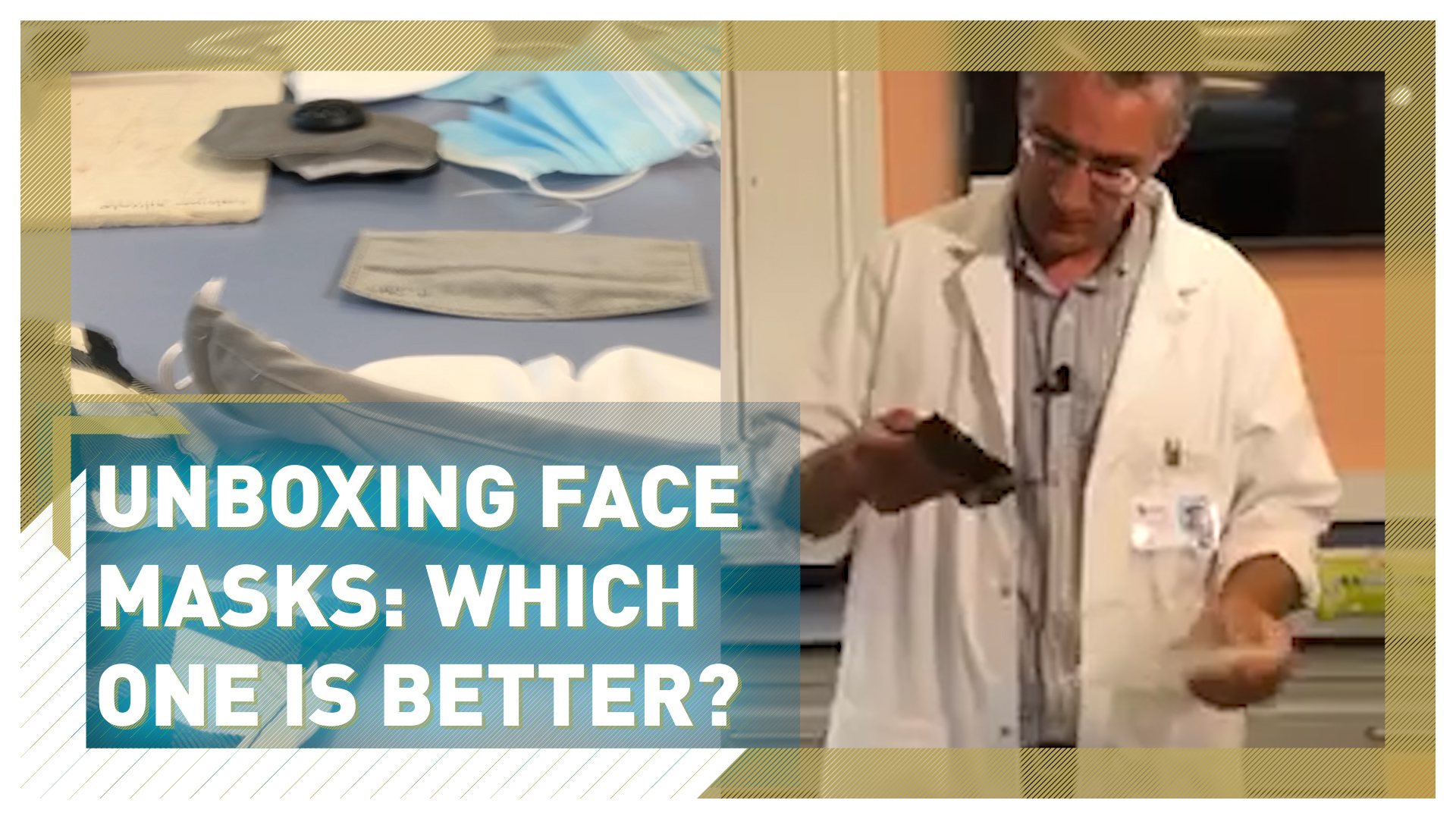10:57

There is much confusion in Europe over face coverings, as guidance has changed considerably through the unfolding of the pandemic. One thing that has become clear is that we need them, as multiple tests have proven that they are effective in helping prevent the spread of the virus.
But when do we need face masks, and which kind should we wear? With the explosion of face masks demand, the market is now full with such a great variety of face coverings that it might be confusing to choose the right one.
That's why we asked an expert to compare nine face masks and explain the science behind them. Dr Simon Kolstoe, senior lecturer at the School of Health and Care Professions at University of Portsmouth, UK, told us there are three things to look for when choosing a face mask.
The fit
"The World Health Organization has recommended that if you need to go out somewhere - and if you're going into a crowded place or if you're going into a confined area, or if you're going to have close contact with other people - it makes sense to wear a mask because that just prevents you blowing your breath over other people and potentially spreading coronavirus," starts Kolstoe.
"If you wear something over your face, you have like a breath-diverting device, a mask diverting your breath," he explains. "You're pushing your breath over the body at the top of your head and thus you're not - if you are asymptomatic and you do have coronavirus - you're not spreading the virus particles as far."
So then the question is, what is the most effective face mask to wear?
"The fit of the mask is quite important," starts Kolstoe. "However, if the aim is to stop you breathing out over other people, it probably doesn't matter if it's not the tightest fit, as long as your breath is going over your body."
What's essential is to have a face mask that goes over your nose and over your chin. According to Kolstoe, the best masks are the ones with a piece of wire on the nose to ensure a tight fit. You don't want a mask that's too loose: you can tight a knot around your ears if you feel your breath coming out on your cheeks, whereas a tight-fitting mask should divert your breath towards your face or toward your chest.
A sign that your mask is working well is if your glasses fog up when you breathe. "Those of us who wear glasses really suffer from face masks because you can often feel your breath getting diverted up and misting up your glasses," says Kolstoe. And that's a sign that the face mask is doing what's supposed to do.
The fabric
Surgical masks have three different layers of material: "The outer layer is a hydrophobic layer, which means it prevents water getting through. So it's not quite waterproof, but it is certainly splash proof," explains Kolstoe.
"Then you have the inner layer, which is more like a sort of tissue paper, it's very absorbent. So this is going to trap moisture as well, more likely, the moisture that you breathe out.
"And then the middle layer is a sort of papery type material, and that's obviously going to be very absorbent as well. So that's going to trap a lot of the moisture in your breath. And remember, of course, the coronavirus will be carried in droplets as you breathe out."
When it comes to fabric face masks, the more robust they are the most efficient they are. A lot of fabric face masks come with filters, which represents an additional layer of protection.
Kolstoe warns against flimsy fabric face masks, and faced with a fashion face mask that's basically just netting he says "it's completely ineffective whatsoever."
The packaging
Another thing to look for is quality testing: Kolstoe suggest checking to see if the mask have a quality stamp. In the European Union, all face masks considered PPE or medical devices which have undergone quality tests have a stamp of approval, the CE mark.
To receive the CE mark, different devices must comply with different standards according to their intended use: surgical face mask normally worn by clinical staff answer to the standard for CE marking requirements as EN 14683. Protective face shields must follow the EN 166 standard. Mask such as the FFP2, FFP3 or KN95 must answer to the requirements of EN149.
The ultimate test: Light a match
If you're still unsure about how to tell whether your face mask is good or not, Kolstoe shared with us a fool-proof method to test the effectiveness of a face mask: he calls it "the match test."
"One really good way of testing a face mask, to find out how effective it is at actually diverting your breath, is to simply light a match and then try to blow out the match through the face mask," he says.
A good face masks shouldn't even move the flame. One that's not really effective, for example a flimsy fabric one, will let you blow out the flame quite easily.
We tested this method on 9 different type of face masks, and we can tell you that Kolstoe found that N95 masks were the best for efficiency and fit, but others also withstood the challenge.